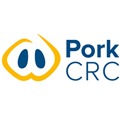 Professor van Barneveld, who has many roles within the Australian pork industry as a nutritionist and scientist, discussed the key management challenges experienced when pork producers transition from stall-housing systems to group-housing gestating sows.
Professor van Barneveld, who has many roles within the Australian pork industry as a nutritionist and scientist, discussed the key management challenges experienced when pork producers transition from stall-housing systems to group-housing gestating sows.
His address is published as a full paper in CSIRO’s prestigious ‘Animal Production Science’ journal, a special edition of which was prepared as conference proceedings.

Acknowledging that the transition from stalls to groups can be daunting, Professor van Barneveld believes that most Australian producers are managing the process well.
“Backed by quality research from the Pork CRC, a high level of innovation and typically advanced husbandry skills, Australian producers have already begun to enjoy productivity equivalent or superior to that achieved in stall-based systems,” he said.
However, from a management perspective, conversion from stalls to group housing for gestating sows presented several challenges, including:
(1) Ensuring all sows receive daily allocations of nutrients.

(3) Minimising aggression and negative interactions between sows.
(4) Accommodating more activity and movement concurrent with reduced stereotypical behaviours and a greater capacity for sows to regulate their thermal comfort.
(5) Developing reproductive, management, and feeding strategies that compensate for the increased space and capital requirements of group-housed systems.
(6) Minimising lameness and foot injuries in group-housing systems.
Professor van Barneveld said nutritional management was central to many of these challenges, of which satisfying nutritional requirements was only one aspect.
“In particular, a focus on minimising gilt weight variation on entry to the breeding herd, optimising sow feed intake during lactation and managing sow aggression at mixing by eliminating competition for food is critical,” he said.
“Producers require nutritional strategies that ensure the sow’s productive capacity is optimised, without the luxury of stalls to manage the individual needs of sows.
“It’s also important to recognise that each group housing system and the associated staff management and husbandry skills will differ, making it impossible to advocate a single approach to nutritional management,” Professor van Barneveld concluded.

According to Pork CRC CEO, Roger Campbell, Pork CRC Program One, ‘Reduced confinement of sows and piglets’, invests considerable funding into qualitative and quantitative research to support producers transitioning to group housing.
As part of that commitment, Dr Campbell launched the Pork CRC/APL publication, ‘Feeding Pregnant Sows in Group Housing Systems’, at the 2013 Victorian Pig Fair.
“The manual incorporates information which effectively turned on its head what we previously thought,” he said.
“We now have solid evidence that increasing feed intake of gestating sows in early pregnancy can increase reproduction and increasing feed availability immediately after mixing ensures less dominant sows get adequate nutrition. This is very important with highly competitive group housed sows and has welfare and performance implications.
“Conversely, Pork CRC research showed increasing feed in late gestation, even for sows with big litters, had little or no effect, so it seems consistent, early feeding is the trick,” Dr Campbell said.
The manual can be viewed on the Pork CRC website www.porkcrc.com.au
October 24, 2013 - Pork CRC


